The mysterious-looking large brown envelope that arrived from Captain John Palliser School in Calgary, Alberta, gave no indication of what might be inside. But it turned out to be a real treasure trove!
First was a stack of hand-written letters to the Whale Sanctuary Project from 65 young students writing about what they’d learned about whale captivity and how they would pledge to no longer support it.
Second, copies of letters from these 5th and 6th graders to Marie Holer, the owner of Marineland Ontario, politely asking her to let Kiska the orca and the 50-plus beluga whales be retired to a seaside sanctuary.
Third, several large-scale blueprints for a seaside sanctuary, based on criteria set by the Whale Sanctuary Project on our website.
And finally, a scrapbook of photos, designs, diagrams, collages, testimonials and all kinds of ideas.
(Note: What follows includes pictures that we have scaled down in size and resolution for the web. You can see this same page with better graphic renditions in this .pdf version – a 10 megabyte download.)
So, how did all this come about?
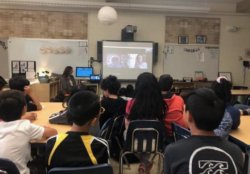
Students in Room 15/16 at Captain John Palliser School explore the work of the Whale Sanctuary Project.
It turned out that three 5th- and 6th-grade teachers at Captain John Palliser School in Calgary had put together a fascinating project for their young students. After sharing an article with them about our work, the teachers used the Whale Sanctuary Project as the subject of a reading comprehension project designed for the students to demonstrate their understanding of the article, and to make further connections to the topic.
The students then watched the TEDx talk “Whales Without Walls” by Executive Director Charles Vinick and wrote letters to him expressing their understanding of our work. They also pledged to not go to “trick shows” and “tank shows,” as they called them, but to try to see whales in their natural habitat. Each of them also wrote to the owner of Marineland, sharing their reasoning for the release of Kiska and the belugas to a sanctuary where they would have a chance to thrive.
Given the high engagement of the students, their teachers decided to take it a step further. They created small groups of four-to-five students who worked together to design architectural blueprints of a sanctuary. These unique designs included innovative features like helipads, wind and solar powered facilities, a whale-shaped submarine for underwater viewing in a whale-shaped sanctuary, electric vehicles for staff, veterinary areas, staff facilities, an amphitheater for documentaries, and a cannon for fish feeding.
The Blueprints
Here’s a selection of the blueprints from the 5th- and 6th-grade students at Captain John Palliser School in Calgary. We love the creative ideas in these designs and plan to include several of them when it comes to building the sanctuary itself.
Note, however, that except for a nature trail with viewing from a distance, facilities for visitors that several of the students have included (like a museum, gift shop or domed video room) will be at a separate location off-site in order to minimize intrusion on the whales.
(And a reminder: there are better renditions in this .pdf version.)

Above: This design features solar panels and other environmentally friendly features and several facilities for visitor experience that will, in fact, be located off-site.

Above: A whale shaped sanctuary, with a whale shaped submarine for underwater viewing, Tesla electric vehicles for staff, a helipad, and a gift shop built out of recycled plastic and garbage. These designers clearly have a future in hi-tech!
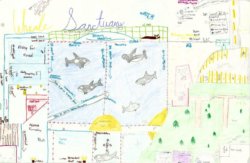
Above: This “Amethyst Cove Seaside Whale Sanctuary” design features separate areas for male and female whales needing rehabilitation. It also adds an underwater viewing area, but this would not be included at the sanctuary itself in order to minimize any unnecessary intrusion into the lives of the whales.
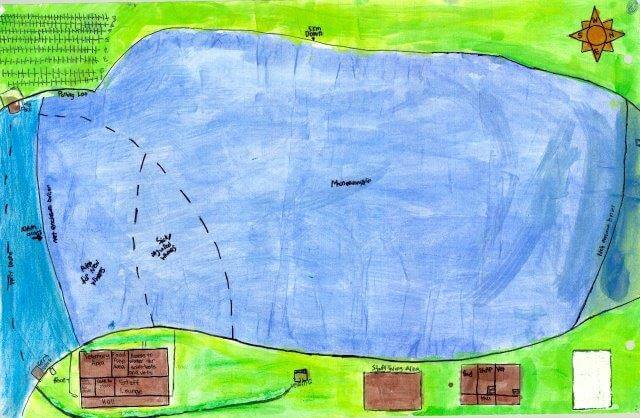
Above: This clean and simple design covers all the basics: simple facilities and lots of space for the whales.
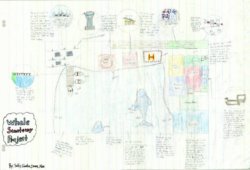
Above: This design incorporates a “Fish Import Center.” Other features include wind and solar panels to minimize pollution, a research lab (for non-invasive observation), a health center and helipad.
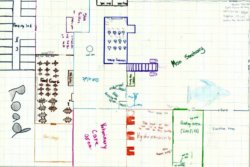
Above: This design, conceived as being on the coast of Vancouver Island, is well-laid out. It adds the idea of a domed roof over one of the rooms, and with noise canceling walls so as not to disturb the whales – an innovative concept.
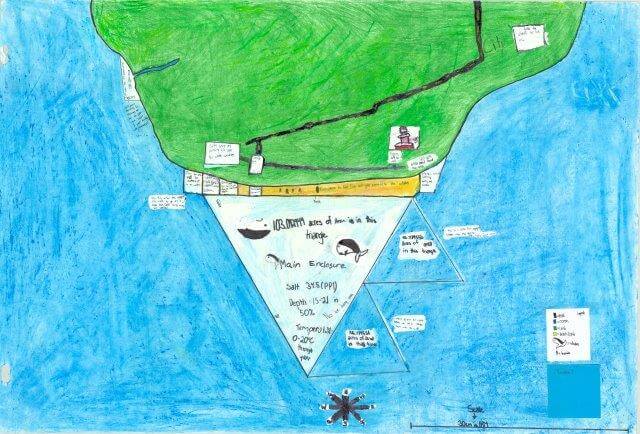
Above: This sanctuary at “Simon’s Island” features triangular shapes for the main enclosure and veterinary areas, and a “fish cannon” to feed fish to the whales.
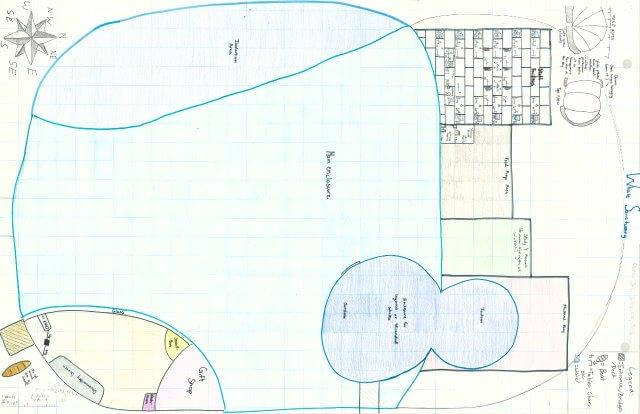
Above: We like how the medical bay is half indoors and half outdoors in this design. And while we wouldn’t have a dome, however transparent, over the whole sanctuary, it’s something to think about in terms of the medical bay.

Above: This sanctuary seems to be home to a happy, whale family- mom, dad, sister and brother, and even a baby sister and brother. Note that none of the whales will be having babies at the sanctuary because we don’t want to be raising any more whales in any kind of captivity. Meanwhile, the whales depicted here are clearly all smiles in their sanctuary home!
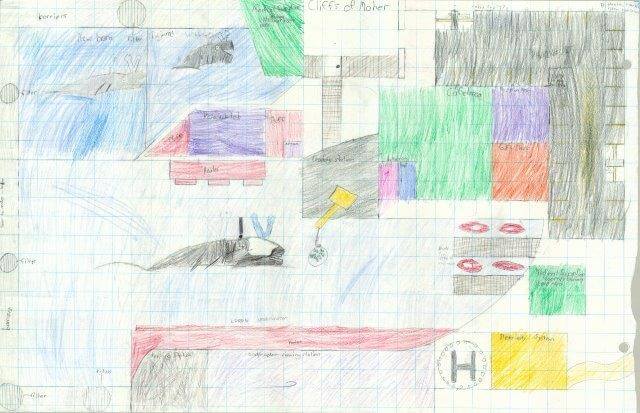
Above: At the “Cliffs of Moher” Sanctuary we find docks for scientists and medics, a research lab, an underwater viewing station, and a $7.00 entry fee.
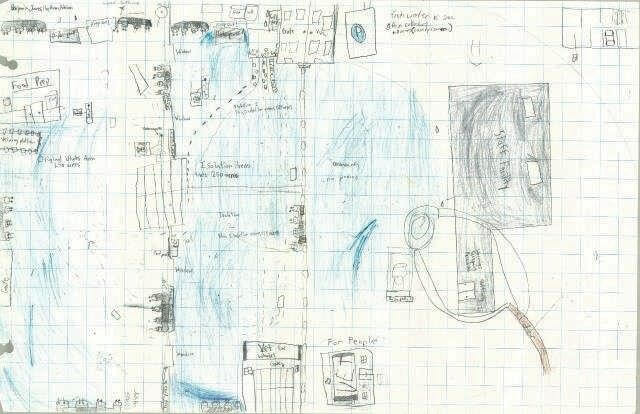
Above: Isolation areas, veterinary areas, wind turbines, rain barrels, and drones for security are the highlights in this design.
Letters from Students to the Whale Sanctuary Project
All 65 students wrote a letter to our executive director, Charles Vinick.
“Thank you all so much,” Charles wrote back. “I’ve never before had so many letters in one day. And I’ve read every one of them.”
Some of the letters had questions or comments on Charles’s TEDx talk, which the students had all watched. Others wrote about how their thinking about whales had been transformed by what they’d been learning. And many of them wanted us to know what they were going to do to help bring an end to keeping whales in captivity.
Here are just three of those letters:

_______________________

_______________________
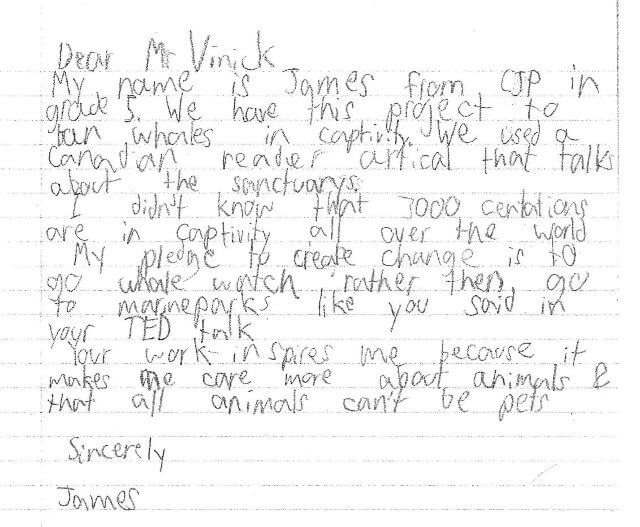
Pages from the Scrapbook
These scrapbook designs explore the many facts and facets of whale captivity and look at the alternative that sanctuary can provide.
One student, for example, contemplated what it must be like for an orca living in a concrete tank:
“If I was trapped in a room filled with mirrors, I would get dizzy. Since I mainly use my sense of sight, I would get confused. Imagine if you were an orca with a sense of echolocation, everything would reverberate around you. This is what it feels like being in a concrete tank alone.”
Here are some of the pages. (And a reminder: there are better renditions in this .pdf version.)
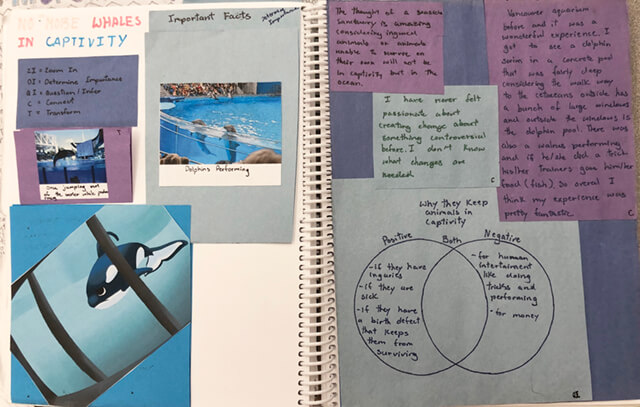
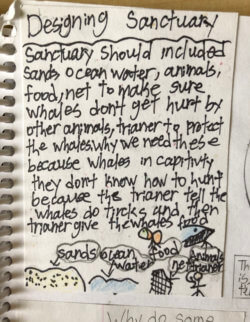
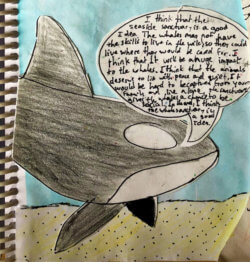
And we’ll give the last word to this delightful character:
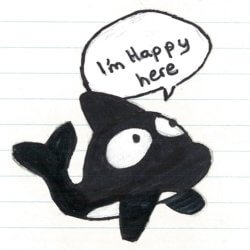
Thank you to all the students for your remarkable commitment, creativity and vision, and to your teachers for the care and guidance you put into this unique project. We look forward to welcoming you all to the sanctuary.
1 Comment
This brought back so many memories because I was one of these kids back in the early 90s writing to anyone I could to help free Keiko.
I only now just found out about the Whale Sanctuary Project, and was brought to tears. I don’t come across many people who believe in what you all are working so hard to achieve.
So, I thank every person involved, and hopefully I can contribute somehow as well.